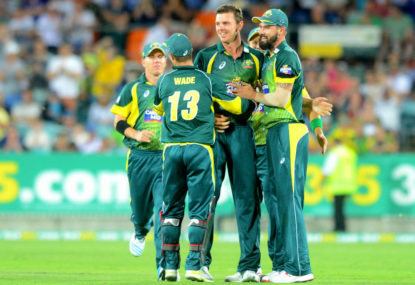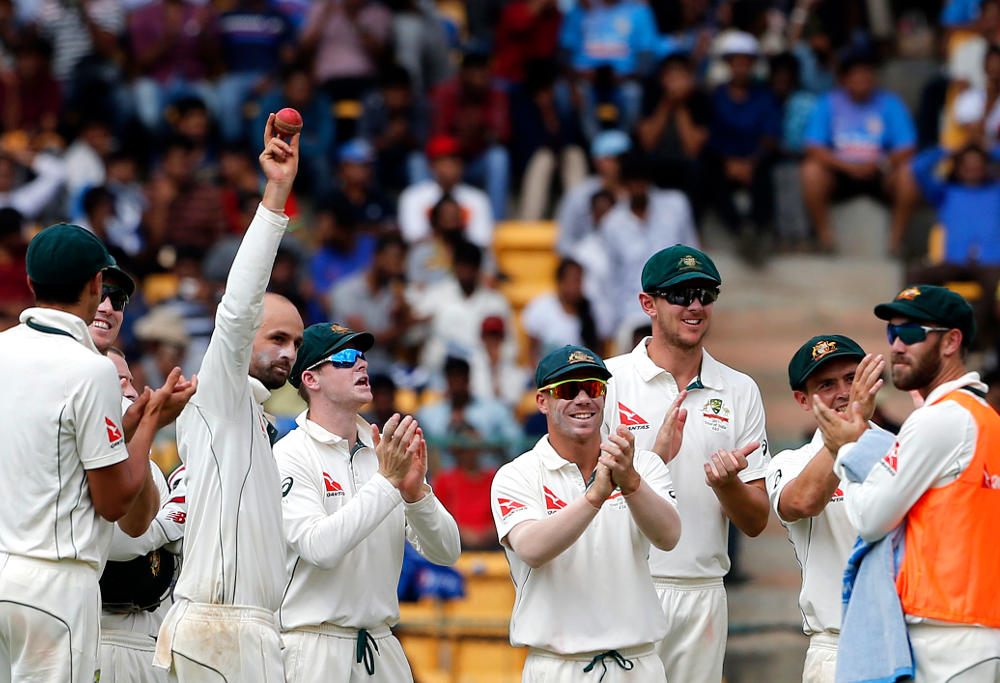Bona fide 'passengers', no-brainers and 'Agar from Wish': A candid look at India's perplexing T20 WC squad
India have announced their 2024 ICC Men’s T20 World Cup squad which is set to be played in the USA and Caribbean. The 15-man…

I’m sorry to be the spectre at the feast but the recent calamitous fallout of the ongoing pay battle between Cricket Australia and the Australian Cricketers Association has got me on the side of the so called ‘heartless bureaucrats’ – and with good reason.
As of 12:01 this morning, almost 230 of Australia’s greatest cricketers will be out of contract and for the foreseeable future, without an income.
Naturally the two sides have spent their final moments before diving head first off the preverbal cliff not on hammering out a deal, but on winning the inevitable media war.
Cricket Australia said the ACA had refused to “show genuine flexibility in the best interests of the players and the game” during the lengthy negotiations, while the ACA has berated Cricket Australia for leaving the game in “the worst state of uncertainty since the days of World Series Cricket”.
Now, to say either side in this conversation has been the adult in the situation would be sadly misplaced. Both at one time or another has acted like a tired toddler refused their favourite toy.
I’m putting a lot of faith in Cricket Australia’s assessment that 70 per cent of all CA funding goes to the elite level of the game; if true, it’s a damming assessment of the state of play in Australian cricket.
CA has stated that: “the model was adopted 20 years ago to address the underpayment of players. The game has changed fundamentally since then: players are now justifiably well rewarded and the modern challenge is the chronic under-funding of the grassroots of the game, particularly junior cricket.”
This is a valid point. In 1997 we still saw Test players routinely play for their state sides and Twenty20 cricket was still a concept played only at junior levels.
But 2017 is a whole new kettle of fish.
Star player Josh Hazlewood took to ACA’s Facebook page in a video to say it was “hugely important” to the players that more money be filtered through to state players and female players and said they had the right to feel disrespected by CA.
I agree, it would be fantastic to see state and female players be paid more for their efforts but would star players be willing to be the ones to sacrifice for their comrades? I’m highly doubtful.
Now I was lucky as a small child, I remember spending days at the WACA watching the likes of Justin Langer, Adam Gilchrist and Damien Martyn of WA take on the Waugh brothers of NSW and it was amazing. To see those Test players in their state colours was a thrill.
But those times are gone and as much as my nostalgic views wish it wasn’t so, they are not coming back.
Cricketers seem to want the best of both worlds. To cash in on lucrative Twenty20 competitions, as well as reap large amounts of cash at the representative level.
Now it all comes down to personal opinion, if you want to ‘cash out’ and become a Twenty20 raider and play in four or five competitions a year for big cash, you are free to do so. If you want to work your heart out for a baggy green cap, fantastic.

(AP Photo/Aijaz Rahi)
The one thing that keeps being brought up is that the CBA breakdown could lead to an England whitewash of the 2017 Ashes; a thought that the ACA hopes puts shivers down Cricket Australia’s spine.
Problem is these highly paid players have won just two of the last seven Ashes series.
Credit where it’s due that both of those wins were 5-0 whitewashes but to think this would be the proverbial straw to break the camels back is laughable.
This pay breakdown shows that cricket in this nation is at a flashpoint not seen in decades. But weirdly the roles have changed.
When World Series Cricket came to be; our Test stars were woefully underpaid and saw Tests routinely sell out.
Now, the top test players get paid much more than what many would consider an average income, they have lucrative offers from overseas and routinely play several test series a year.
But really it comes down to us, the fans. Do we want to pay the players the exorbitant fees they believe they’re entitled too? Or try to stop the mass exodus at junior level to other sporting codes.
As always, it comes down to where we as fans willing to put our money.